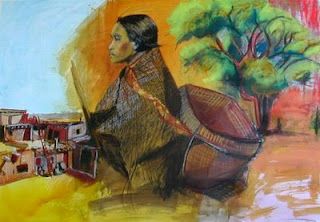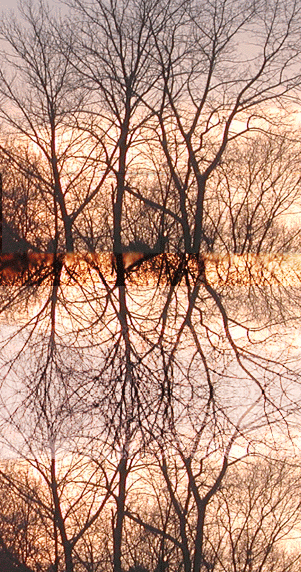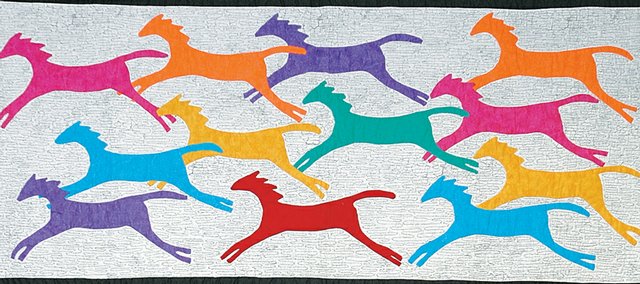Serendip is an independent site partnering with faculty at multiple colleges and universities around the world. Happy exploring!
Notes Towards Day 9 (Tues, Oct. 2) : "It's hard to see the forest when you are a tree"


"I am Kochinnenako"
I. coursekeeping
* naming--who's left to take this test?
* it's pouring! we're inside! (maybe Hannah will get us to the Moon Bench on Thursday?)
* reminder that my Monday afternoon conferences will be on Wednesday this week: Sara @ 2:30, Wanhog @ 3, Claire @ 3:30, Susan @ 4....thanks! I'll e-mail other papers tonight
* reading for Thursday is 2 short essays by the poet Gary Snyder, "Unnatural Writing" and "Language Goes Two Ways," which are going to ask us to think about the KINDS of language we use; and an essay by Joseph Meeker called "The Comic Mode," which is going to ask us to think about the KIND of stories we are writing (note that we keep moving up levels of abstraction, from words, to sentences, to grammar, to forms of language usage--and finally to the most general shape that stories can take...)
* your writing assignment for this Friday asks you to re-think the kind of writing you have been doing. Paula Gunn Allen says "it's hard to see the forest if you're a tree"--it's hard to get outside the system you are in. But we're going to try to do this!
So: pick a paragraph or two out of something you have written recently (the keyword exercise might be fun here, or your thesisi paragraph about Fun Home; or maybe the two pieces of Sunday night nature writing you've already done). Using Snyder's terms (is it "harmonious, middlebrow"?) or Meeker's (is it "tragic? comic? pastoral"?), characterize what you wrote. Then try to re-imagine--> AND RE-WRITE ONE PARAGRAPH of your essay, using one of the alternative languages or genres Snyder and Meeker have suggested. Explain the effect of your doing this: what's gained? what's lost?
III. In preparation for this next assignment, I had asked you to come to class w/ a copy of your partner's paper, and be ready to talk to her about its STYLE, in the terms we have been using so far:
* How formal is it? How playful?
* How focused? How diffuse?
(Does it use what Paula Gunn Allen calls an "open" or "unified" field perception?)
* Is the prose verb-centric (like the rheomode)?
* Or full of nominalization (like green grammar)?
* How much does the paper draw on the visual (like Bechdel)?
* How clear is it that some particular person is writing this? (How clear should it be about p.o.v?)
* How much does it rely on the "god-trick," the illusion that it is written from someplace "outside" this world?
* Suggest some ways your partner might play w/ her language use, to explore some alternative possibilities of expression...
returning to the large group:
what did you learn about writing from reading your partner's paper?
what did you learn about thinking ecologically, from reading your partner's paper?
IV. what did you learn about Bechdel's work, from reading your partner's paper?
what were your reactions to our evening w/ Alison Bechdel?
did hearing her shift any of your understandings of her novel?
prod you to re-think/re-direct your paper in any way?
quotes I wrote down from her speaking:
"It's hard to draw the classroom: where is it happening?"
[cf. our exercise of describing in an "environmentally friendly"
mode "what was happening, just then,in the room"]
on the permission to be/go outside class to read --> "free range reading"
how do you make a story out of the chaos of each life? [cf. Snyder, upcoming!]
"intimacy disorder": "the belief that saying it out loud will relieve you of it"
"I have a very literal mind…came very late to symbol and analysis"
"I romanticized my life in story, made it unreal"
challenge; how to take random events and turn them into stories (= lies!) that tell a truth
memoir-writing as a religion: tell a story to find out what it means
"you can dismantle the mother, but you must murder the father"
"the book [Are You a Mother] was a profession of love for my mother--but she didn't get that."
it's about design more than drawing": get in visual information
"I hated the Sunbeam logo: if bread is life, it's ironic to be killed by Sunbeam truck."
[asked about taking the risk of coming out @ Oberlin several decades ago:]
"I was in a very protected place. It was like being here."
V. using Paula Gunn Allen to re-think this story....

offers us a way of reading she calls
"tribal-feminism or feminist-tribalism....
of the materials...in short, it's hard to see the forest when you're a tree."
"Language embodies the unspoken assumptions and
orientations of the culture it belongs to..."
(as translated by Allen's mother's great-uncle)
- A KERES INTERPRETATION:
a narrative version of a ceremony related to the planting of corn, transfering focus of power, with assumptions...of balance and harmony...sense of rightness, or propriety...fundamental principle of proper order...ritual agency in conflict-phobic culture
- A MODERN FEMINIST INTERPRETATION:
use of passive female figure as pawn in male bid for power...
useful in instructing women in their obligation in revolutionary struggle
(assumes that conflict is basic to human experience and that
women are essentially powerless)
- AN INDIAN-FEMINIST INTERPRETATION

- tribal habit of mind toward equilibrium of all factors
- even distribution of value among all elements in a field
- no single element foregrounded...no heroes, no villains
- no chorus, no "setting"...no minor characters...
- foreground slips along from one focal point to another until all the pertinent elements in the ritual conversation have had their say...
- focus of the action shifts...there is no "point of view"....

than of foreground-background perceptions....Traditional peoples perceive their world in a unified-field fashion that is far from the single-focus perception that generally characterizes
Western masculinist monotheistic modes of perception."
Is it even possible for us to look this way,
using unified- or open-field perception?
more synchronistic than chronological, and more dependent upon harmonious relationships of all elements within a field of perception..."
of the plot and process of a traditional tribal narrative...."

might help us in reading Bechdel's graphic novel:
Does it perhaps offer a more "distributed" representation of the world?
A more "ecological" interpretation than one
focused on a single family's psychodrama?
What does it mean to "read ecologically"?


